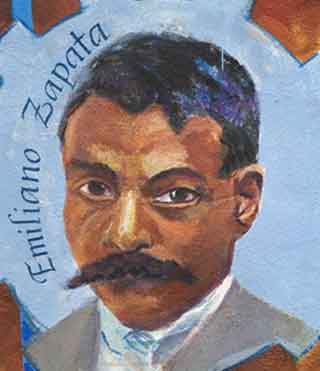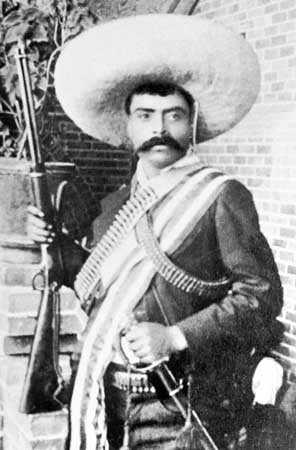 |
Photo: Scott Braley |
 |
Photo: Scott Braley |
The son of a 'strong farmer', Zapata grew up to become the most famous leader of the Mexican Revolution. A gifted organiser, Zapata also spoke Náhuatl, his local indigenous language. Elected leader of his village in 1909, Zapata began recruiting an insurgent army even before the Revolution beginning in 1910 which overthrew the dictator Porfirio Díaz.
Zapata's Liberation Army of the South did not accept the new reformist government under Francisco Madera. The Zapatistas fought on against government troops lead by Victoriano Huerta, the general who overthrew Madera in February, 1913, and was then deposed in 1914. At the following Convention in Aguascalientes, called to decide the future of Mexico, the Zapatistas demanded 'tierra y libertad' - land and freedom - for their people. This was the core of Zapata's 'Plan de Ayala', produced in November 1911.
Zapata remained in opposition, fighting against terrible repression, until 1919. Lured to a meeting with government troops apparently mutinying against President Carranza, he was gunned down on April the 10th, 1919. Zapata's ghost was seen to ride the hills of his native state, Morelos.
Zapata's memory, like his ghost, rides on in Mexico. His name has been invoked by the indigenous rebel army in Chiapas, the Zapatista Army of National Liberation (EZLN), in their struggle against exactly the same social ills that Zapata fought against: large landlords and (often foreign-owned) big business running a corrupt and repressive régime that leaves the peasants, particularly indigenous peoples, landless and exploited.

Photo credit: www.brittanica.com